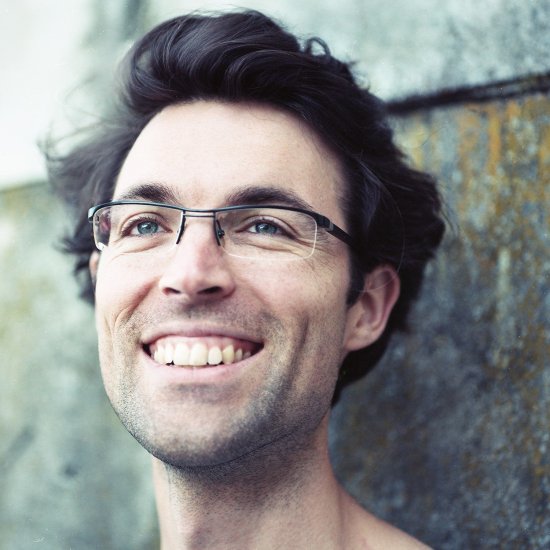VTSC interviewed Mathieu Spencer, the speaker from the last session. Spencer spoke about his project Rock your Cortex, his passion for visual thinking and the way he articulates his work. Spencer makes his patients draw their pains, as part of the diagnostic process in order to treat them.
Visual Thinking School Colombia: What is Rock your Cortex about and why did you started this proyect?
Mathieu Spencer: Rock Your Cortex is about empowering healthy rock stars thanks yo technology, entertainment and design! The two main tolos that I use to do this are Chiropractic and Visual notes. Chiropractic can physically help artists to naturally get ride of their pains and also improve their performances. Visual notes can help them understand what are the different aspects of health and what they can do for themselves to be at their best and achieve the life that want t olive. I believe that by combining this approach to the body and to the mind people can fully express themselves and make the world a better place. And if I was able to help them on that adventure, I’ll be a happy man.
VTS Colombia: Why did you started using data visualization as a tool to explain chriropractic?
MP: It’s the easiest way for me to do it. I started doing mind mapping about 15 years ago, which evolved into my own style over the years. In 2011, with help from a couple of friends Iñaky Bernal Redondo and Toño García, I made my first video that I presented at TEDxZaragoza. After sharing it on Facebook I got almost 200 views in less tan 24 hours, which felt like a lot at the time. That was an eye opener for me. Wow. I can actually have an impact on my digital network.
So after opening my office in Warsaw, a few years ago, it was just natural for me to make a video with Visual notes to present what chiropractic is all about.
VTS Colombia: Have you always drawn?
MP: For as long as I can remember, especially when my teachers were boring!
VTS Colombia: Do you think other people might use visual thinking as a tool in their work? What benefits would it bring to them?
MP: Yes, anybody can benefit from using visual thinking in their work. It’s a very powerful tool, it’s the easiest and fastest way on a neutological level to represento r transmit ideas. That’s why it’s developing so fast these days. In the past 5 years there has been an explosión of it. This goes in parallel to the exponential increase in information that we consume thanks to the internet. We feel overloaded with all the texts, images and videos published daily around the world. Visual notes help us to express and understand all these complex ideas in a very effective way.
VTS Colombia: Have you ever asked your patients to draw their pain in order to have a better undestanging of what they feel? Do you think that would help making your diagnosis? Would a drawing be better than the explanation with words?
MP: After the basic, name and address stuff it’s the first thing I do. Ask them to draw on a little guy where they have a problem. It is easy for the patient to be precise and to show the región that is bothering him. This will help me to find where the cause of the problema is. If someone draws that he has pain going down his lega ll the way to his big toe, I am alredy thinking that he might have a problem at the L5 lumbar level (that’s the lowest vertebrae in our spine). Alone a drawing is not enough, the combination of drawing and talking is, in my opinión, the best way to figure out what is precisely going on with one of my patients.
It’s similar to doing Visual notes, you want to use the creative aspect of your brain and the logical aspect.
VTS Colombia: Did you got or get inspired by someone else in the use of visual thinking in your work?
MP: For the past years, my biggest inspiration has come from Jean-Michel Basquiat. He’s one of the biggest artists to have emerged from the Street art scene of the late 70s early 80s. If you are lucky to see an exposition go for it. Besides him, artists’ sketch books, they are usually very creative in their way of taking notes.
VTS Colombia: What is your concern in the way people get related with visual thinking?
MP: My biggest concern is when people tell me “but I don’t know how to draw”. That’s not a problem this isn’t about making a piece of art. It’s about representing ideas, like Dan Roam suggests. The artistic aspect will come afterwards if you want to develop it.
VTS Colombia: What would you asked to the next speaker that the Visual Thinking School Colombia interview?
MP: I’d like to ask the next sepaker what he thinks about making mistakes. Are mistakes part of the process of visual thinking?


[…] Interview with Mathieu Spencer: Visual thinking in medical diagnosis […]
LikeLike